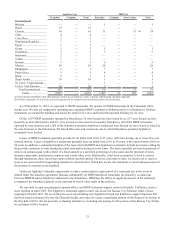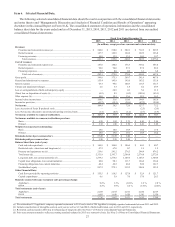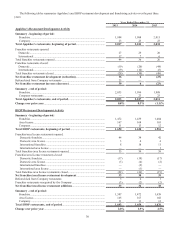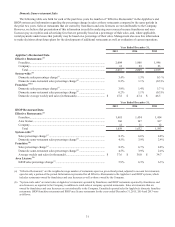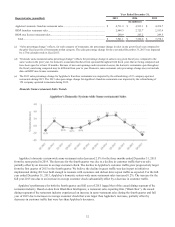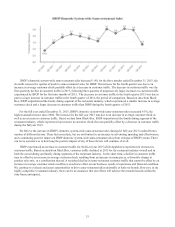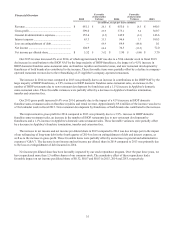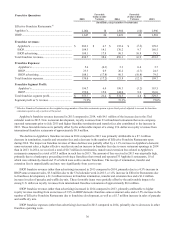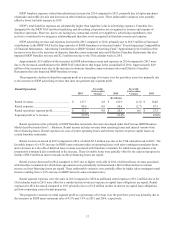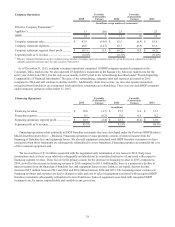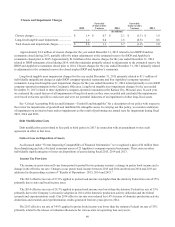IHOP 2015 Annual Report Download - page 53
Download and view the complete annual report
Please find page 53 of the 2015 IHOP annual report below. You can navigate through the pages in the report by either clicking on the pages listed below, or by using the keyword search tool below to find specific information within the annual report.
33
IHOP’s domestic system-wide same-restaurant sales increased 1.4% for the three months ended December 31, 2015, the
eleventh consecutive quarter of positive same-restaurant sales for IHOP. The increase for the fourth quarter was due to an
increase in average customer check partially offset by a decrease in customer traffic. The decrease in customer traffic was the
first quarterly decline in customer traffic in 2015, following three quarters of progressively larger increases in customer traffic
experienced by IHOP for the first nine months of 2015. The decrease in customer traffic in the fourth quarter 2015 was due in
part to a large increase in customer traffic in the fourth quarter of 2014, the period of comparison. Based on data from Black
Box, IHOP outperformed the family dining segment of the restaurant industry, which experienced a smaller increase in average
customer check and a larger decrease in customer traffic than IHOP during the fourth quarter of 2015.
For the full year ended December 31, 2015, IHOP's domestic system-wide same-restaurant sales increased 4.5%, the
highest annual increase since 2004. The increase for the full year 2015 was due to an increase in average customer check as
well as an increase in customer traffic. Based on data from Black Box, IHOP outperformed the family dining segment of the
restaurant industry, which experienced an increase in customer check that was partially offset by a decrease in customer traffic
during the full year 2015.
We believe the increase in IHOP's domestic system-wide same-restaurant sales during the full year 2015 resulted from a
number of different factors. These factors include, but are not limited to, an increase in advertising spending and effectiveness,
and a continuing positive impact on IHOP domestic system-wide same-restaurant sales from redesign of IHOP's menu. There
can be no assurance as to how long the positive impact of any of these factors will continue, if at all.
IHOP experienced an increase in customer traffic for the fiscal year 2015 while Applebee's experienced a decrease in
customer traffic. Based on data from Black Box, customer traffic declined in 2015 for the restaurant industry overall and in
both the casual dining and family dining segments of the restaurant industry. In the short term, a decline in customer traffic
may be offset by an increase in average customer check resulting from an increase in menu prices, a favorable change in
product sales mix, or a combination thereof. A sustained decline in same-restaurant customer traffic that cannot be offset by an
increase in average customer check could have an adverse effect on our business, results of operations and financial condition.
We continue to evaluate and assess opportunities to drive same-restaurant sales and traffic at both our brands. However, in the
highly competitive restaurant industry, there can be no assurance that our efforts will achieve the intended results within the
time frame anticipated.


